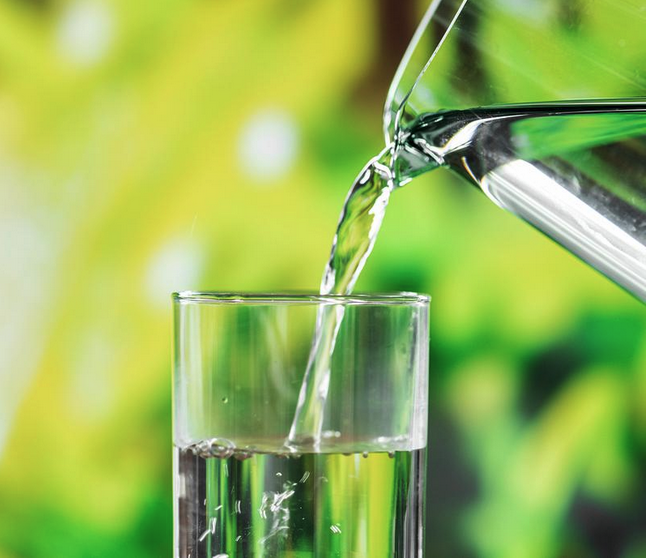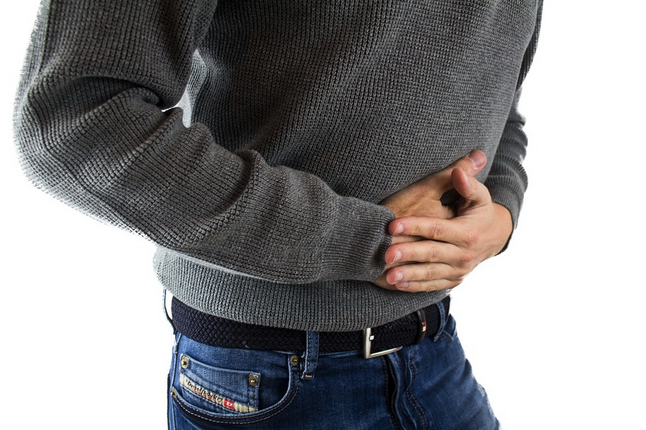My husband and I don’t make a secret of the fact that we live in Central FL. With that, people have mentioned to us several times that the water at Disney World tastes nasty (yes, we know) and therefore, is it safe to drink?
Why water is different in different places

Water in the U.S. tastes different depending on where you are, based on the local minerals that get deposited into the water. But tasting better or worse and potentially making you sick are 2 entirely different things.
If you ever go to Mexico, chances are you’ll be told, “Don’t drink the water! You’ll get Montezuma’s Revenge!”
Caution: traveler’s diarrhea
Of course, Montezuma’s Revenge is the unofficial name for a type of diarrhea travelers get when traveling south of the U.S. border. It occurs when travelers drink tap water or eat food containing a microorganism to which locals are immune.
Traveler’s diarrhea isn’t limited to Mexico, though. As per WedMD,
Areas where there is the highest risk of contracting traveler’s diarrhea include the developing countries of Africa, the Middle East, Latin America, and Asia. The risk of infection varies depending on the type of exposure — from a fairly low risk from eating hot, cooked foods and drinking factory-sealed beverages to a higher risk from eating raw vegetables and fruits and drinking tap water.
The CDC’s list
The main goal of the Centers for Disease Control and Prevention (CDC) is, of course, to keep Americans safe and healthy, both at home and abroad. To that end, they maintain a list of every country in terms of:
- Travel Health Notices (in relation to the country you’re visiting. i.e., if a country is experiencing Ebola)
- Vaccines and Medicines (the ones they recommend you get before visiting. Hepatitis, Polio, Malaria, Cholera, Rabies, Yellow Fever, etc. tend to be common recommendations)
- Non-Vaccine-Preventable Diseases (illnesses to be aware of for which there are no vaccines to prevent. i.e., avoid African Sleeping Sickness by avoiding bug bites, Leptospirosis by avoiding contaminated water and soil, etc.)
- Stay Healthy & Safe (Usually by avoiding the things that could make you sick. So prevent bug bites, keep away from animals, avoid sharing body fluids, know how and where to get medical care wherever you are, etc.)
- Packing List (things you might need above and beyond clothes and your phone, such as altitude sickness medicine, meds to prevent malaria, etc.)
- After Your Trip (be aware that some illnesses from certain places might not show up for a year [i.e., Malaria], to go to a doctor if you show symptoms, etc.)
However, if you look at the “Stay Healthy & Safe” section of each country, you’ll notice that the CDC includes recommendations on whether or not to drink:
- Tap or well water
- Ice made with tap or well water
- Drinks made with tap or well water (such as reconstituted juice)
If it’s safe to drink the water

If the water is safe to drink, the CDC will generally say:
Food and water standards in [name of country in question] are similar to those in the United States. Most travelers do not need to take special food or water precautions beyond what they normally do at home. However, travelers visiting rural or remote areas that are served by unregulated water sources such as private wells should take special precautions to ensure the safety of their drinking water.
These are the countries that the CDC says are usually safe to drink the water:
- Aruba
- Australia
- Austria
- Bahrain
- Belgium
- Bermuda
- Canada
- Chile
- Cook Islands
- Costa Rica
- Croatia
- Curaçao
- Czech Republic
- Denmark
- Estonia
- Finland
- France
- Germany
- Greece
- Greenland
- Guadeloupe
- Hungary
- Iceland
- Ireland
- Isle of Man
- Israel
- Italy
- Japan
- Kuwait
- Liechtenstein
- Luxembourg
- Malta
- Martinique
- Monaco
- The Netherlands
- New Caledonia
- New Zealand
- Norway
- Palau
- Poland
- Portugal
- Puerto Rico
- Réunion
- Saint Helena
- San Marino
- Saudi Arabia
- Singapore
- Slovakia
- Slovenia
- South Korea
- Spain
- Sweden
- Switzerland
- United Arab Emirates
- United Kingdom
- United States
- U.S. Virgin Islands
Of course, be alert and double-check anywhere you go. For example, although the water in Flint, MI, is said to be OK now, it didn’t used to be (and some people are still hesitant to drink it). As the good blog says, Your Mileage May Vary.
If it’s not safe to drink the water

If the water is not safe to drink, the CDC will generally say:
Unclean food and water can cause travelers’ diarrhea and other diseases. Reduce your risk by sticking to safe food and water habits.
These are the countries that the CDC says are generally NOT safe to drink tap or well water, to use ice made with tap or well water, or to drinks made with tap or well water:
- Afghanistan
- Albania
- Algeria
- American Samoa
- Angola
- Anguilla
- Antigua & Barbuda
- Argentina
- Armenia
- Azerbaijan
- Azores
- The Bahamas
- Bangladesh
- Barbados
- Belarus
- Belize
- Benin
- Bhutan
- Bolivia
- Bonaire
- Bosnia & Herzegovina
- Botswana
- Brazil
- British Indian Ocean Territory
- Brunei
- Bulgaria
- Burkina Faso
- Burundi
- Cambodia
- Cameroon
- Canary Islands
- Cape Verde
- Cayman Islands
- Central African Republic
- Chad
- China
- Christmas Island
- Cocos (Keeling) Islands
- Colombia
- Comoros
- Republic of the Congo
- Côte d’Ivoire
- Cuba
- Cyprus
- Democratic Republic of the Congo
- Djibouti
- Dominica
- Dominican Republic
- Easter Island
- Ecuador
- Egypt
- El Salvador
- Equatorial Guinea
- Eritrea
- Eswatini
- Ethiopia
- Falkland Islands
- Faroe Islands
- Fiji
- French Guiana
- French Polynesia
- Gabon
- The Gambia
- Georgia
- Ghana
- Gibraltar
- Grenada
- Guam
- Guatemala
- Guinea
- Guinea-Bissau
- Guyana
- Haiti
- Honduras
- Hong Kong
- India
- Indonesia
- Iran
- Iraq
- Jamaica
- Kazakhstan
- Kenya
- Kiribati
- Kosovo
- Kyrgyzstan
- Laos
- Latvia
- Lebanon
- Lesotho
- Liberia
- Libya
- Lithuania
- Macau
- Madagascar
- Madeira Islands
- Malawi
- Malaysia
- Maldives
- Mali
- Marshall Islands
- Mauritania
- Mauritius
- Mayotte
- Mexico
- The Federated States of Micronesia
- Moldova
- Mongolia
- Montenegro
- Montserrat
- Morocco
- Mozambique
- Myanmar
- Namibia
- Nauru
- Nepal
- Nicaragua
- Niger
- Nigeria
- Niue
- Norfolk Island
- North Korea
- North Macedonia
- Oman
- Pakistan
- Panama
- Papua New Guinea
- Paraguay
- Peru
- Philippines
- Pitcairn Islands
- Qatar
- Romania
- Russia
- Rwanda
- Saba
- Saint Barthelemy
- Saint Kitts and Nevis
- Saint Lucia
- Saint Martin
- Saint Pierre and Miquelon
- Saint Vincent and the Grenadines
- Samoa
- São Tomé & Príncipe
- Senegal
- Serbia
- Seychelles
- Sierra Leone
- Sint Eustatius
- Sint Maarten
- Solomon Islands
- Somalia
- South Africa
- South Georgia & the South Sandwich Islands
- South Sudan
- Sri Lanka
- Sudan
- Suriname
- Syria
- Tahiti
- Taiwan
- Tajikistan
- Thailand
- Timor-Leste
- Togo
- Tokelau
- Tonga
- Trinidad & Tobago
- Tunisia
- Türkiye
- Turkmenistan
- Turks & Caicos Islands
- Tuvalu
- Uganda
- Ukraine
- Uruguay
- Uzbekistan
- Vanuatu
- Venezuela
- Vietnam
- British Virgin Islands
- Wake Island
- Yemen
- Zambia
- Zimbabwe
Traveling can be awesome. But coming down with Traveler’s Diarrhea? Not so much. Stay vigilant and be careful out there.
Feature Image: PXHere
Want to comment on this post? Great! Read this first to help ensure it gets approved.
Want to sponsor a post, write something for Your Mileage May Vary, or put ads on our site? Click here for more info.
Like this post? Please share it! We have plenty more just like it and would love it if you decided to hang around and sign up to get emailed notifications of when we post.
Whether you’ve read our articles before or this is the first time you’re stopping by, we’re really glad you’re here and hope you come back to visit again!
This post first appeared on Your Mileage May Vary

6 comments
Great list. I hadn’t realized that there was a vaccine for Cholera. I’ll look into getting that.
On the unsafe water list I’m surprised about Taiwan and Hong Kong.
Some of these don’t make sense. Hong Kong and Taiwan are safe. Also Singapore is listed as safe but Malaysia isn’t- here is a secret Singapore gets their water from Malaysia! I’ve been to both Hong Kong and Singapore and had zero problems. Also going to Taipei in February and research says it is fine as well
You’re welcome to drink the water in Malaysia but the times I’ve been there I was clearly told not to drink the water. As to Singapore, I read about how they go to great lengths to treat water to ensure a potable supply. It makes sense if you think about it as that would make for a lot less plastic bottle waste.
Christian – I have been to both Singapore and Malaysia and didn’t have any issues. Singapore does buy their water from Malaysia. As for other countries the list is also odd. Taiwan is very advanced and the water is safe there. Also water is good for Croatia, Slovenia and Greece but not Montenegro- huh??? (Will be in all 4 in next 2 weeks). Some countries are clearly unsafe (Mexico, India, etc) but I don’t think the CDC rankings are any more reliable in most cases than the state department safety ratings which are a joke.
BTW I checked the CDC website and it doesn’t say Taiwan water is unsafe. It only mentions to not drink safe water there and avoid water exposed to animals or otherwise unsafe. Frankly, that is similar to anywhere (even in the US). Not to nit pick but the list above IMHO isn’t truly reflective of all the info and recommendations on the CDC site. In most cases if you follow typical protocol like in the US you will be fine. Obviously some are not safe like 3rd world countries (plus Mexico, India, etc) and there are rural areas of many countries you may have issues but if you stay in the major cities in most countries you should be fine.
If water isn’t safe to drink, what other uses concern you? Whether your toilet water is properly purified? I rather suspect most people are primarily concerned about getting sick from drinking water in a certain country.